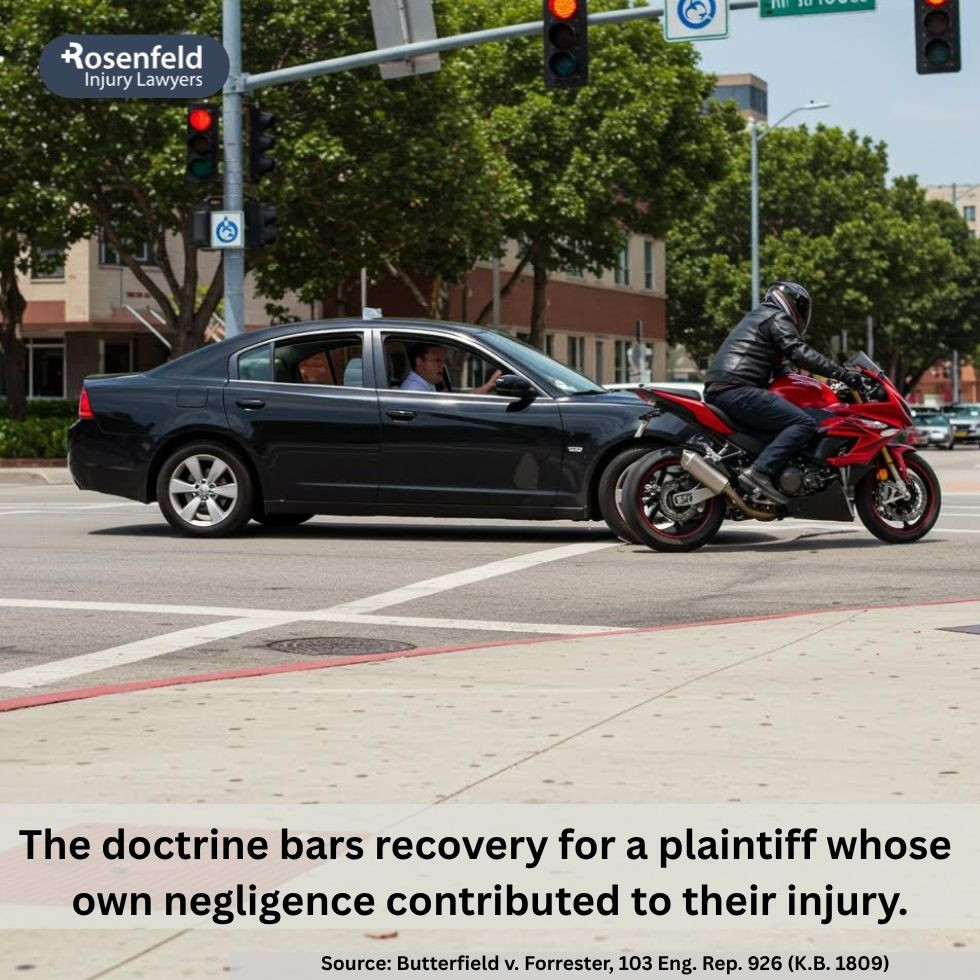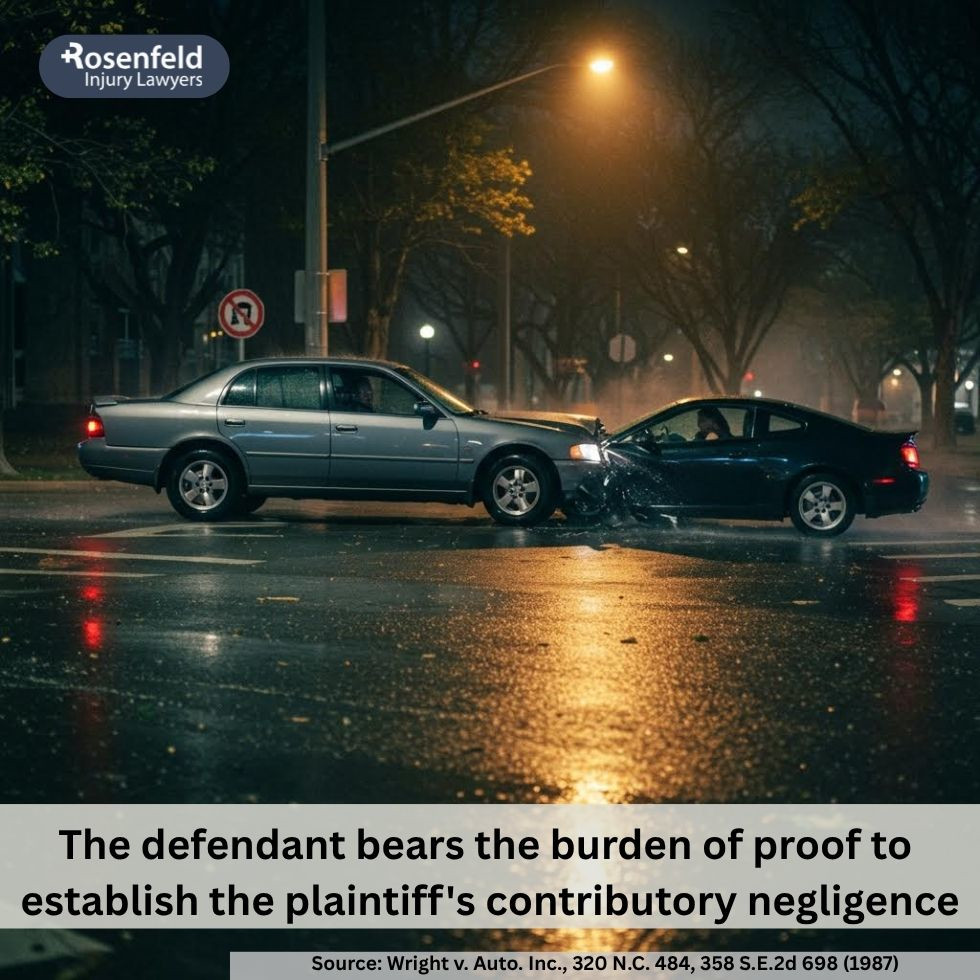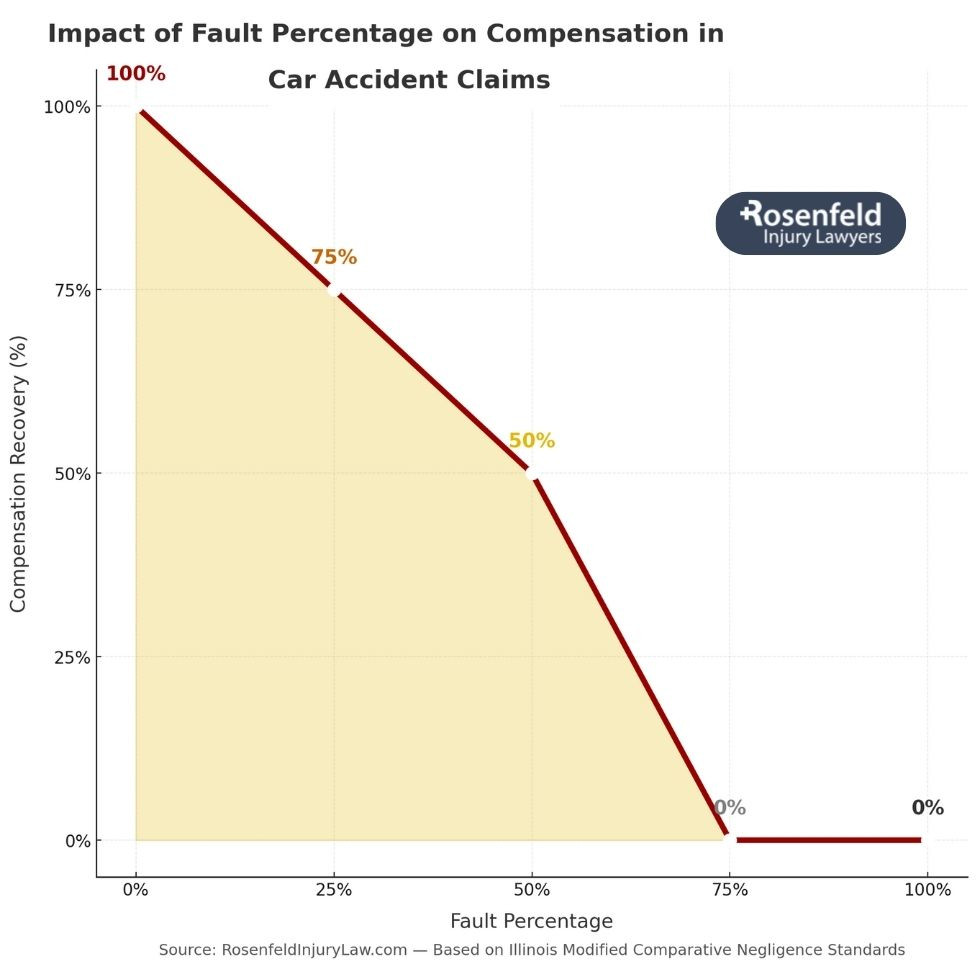- 24/7 Free Consultation: (888) 424-5757 Tap Here To Call Us
Comparative and Contributory Negligence in Car Accidents

Comparative and contributory negligence in car accidents can significantly impact how much compensation you’re able to recover after a crash, especially in a state like Illinois that follows modified comparative negligence rules. Car accidents often involve more than one person making a mistake.
When responsibility is shared between drivers, Illinois law applies comparative negligence rules to determine who is financially liable and to what extent. If you’re pursuing a personal injury claim after a car crash, understanding how contributory and comparative negligence work in Illinois is critical to protecting your rights and maximizing your compensation.
In a car accident case, the legal concept of negligence determines who is liable for injuries and what compensation the plaintiff may receive. States follow different rules, such as contributory negligence and comparative negligence.
Under comparative negligence rules, the plaintiff’s ability to recover damages depends on their percentage of fault. Illinois follows modified comparative negligence.
In the pure comparative negligence rule, recovery is allowed regardless of fault share. The main difference lies in how much the other party or defendant is to blame. Modified and pure comparative negligence laws impact how fault is divided between drivers in a car crash and influence compensation when fault is disputed.
A knowledgeable car accident attorney in Chicago can help you navigate this complex legal landscape and push back against efforts to unfairly shift the blame onto you.

Our Recent Negligence Car Wreck Settlements
When a personal injury claim is filed, the outcome often hinges on the severity of the injuries, the actions of the at-fault party, and how clearly liability is established. Below are several examples of injured victims and their families recovering substantial damages after a serious crash.
- $3,444,000 settlement for a family injured in a highway trucking crash caused by a defendant who failed to yield while merging onto the interstate.
- $2,800,000 recovery was secured for the family of a passenger who died when the other driver, found to be intoxicated, crashed into a utility pole.
- $350,000 settlement was obtained for a woman who suffered a fractured leg after being struck by a taxi making an illegal left-hand turn.
These cases demonstrate how important it is to hold the at-fault party accountable and how a skilled attorney can help a plaintiff recover full and fair compensation.
What Is Contributory Negligence in Illinois?
Contributory negligence refers to situations where the injured party is found to have played a role in causing the collision. In some states, even a small percentage of fault on the victim’s part could prevent any recovery at all.
Illinois does not follow this strict rule. While contributory negligence can affect your claim, it doesn’t automatically disqualify you from seeking damages. Instead, Illinois applies comparative negligence laws, which take a more balanced approach when multiple parties are involved.
Understanding Comparative Negligence Laws in Illinois Car Crashes
Under Illinois’ modified comparative negligence rule, you can still recover damages if you were 50% or less responsible for the car crash. However, your compensation will be reduced in proportion to your share of culpability. If you’re found more than 50% responsible, you are barred from recovering any damages.
This approach encourages accountability while still allowing victims to seek compensation, even if they are responsible to some degree.
How Comparative Negligence Works in Collisions
Let’s say a jury awards $100,000 in damages, but you’re found to be 30% liable. In this case, your compensation would be reduced by 30%, leaving you with $70,000.
Determining fault percentages is typically done by insurance adjusters or, in more complex cases, a jury. Both will review evidence such as police reports, video footage, and witness statements to decide how much blame each party carries.
Insurance companies often try to use these laws to their advantage, arguing that the victim shares more fault than they really do in order to reduce their compensation. That’s why legal representation is so important.

Comparative Fault vs. Contributory Negligence in Illinois
In personal injury cases, the amount of compensation an injured party can recover often depends on the degree of fault. States apply different laws to determine liability. Illinois follows a system based on modified comparative negligence, which offers more flexibility than the stricter pure comparative negligence laws used in a few other jurisdictions.
Here’s how to know when to apply comparative and contributory negligence in car accidents:
Comparative Fault in Illinois: A Modified Approach
Under Illinois’ modified comparative negligence laws, injured parties can recover damages even if they are partially at fault, as long as their share of the blame is 50% or less. These laws allow compensation to be reduced according to the plaintiff’s percentage of fault.
For example, if someone is awarded $100,000 in damages but is found to be 30% responsible for the wreck, they would receive $70,000.
This legal doctrine gives accident victims a fairer opportunity to recover financial losses, especially when multiple factors contributed to the crash. The jury determines the degree of fault assigned to each party involved, including the other party in the case.
Illinois’ rule differs from pure comparative negligence states, where a party can still recover compensation even if they are 99% responsible. Illinois does not follow pure comparative negligence and bars recovery once the plaintiff’s negligence exceeds 50%.
That’s why having a lawyer help prove you’re responsible for less than 50% of the collision is so vital in Chicago.
Contributory Negligence: A Much Stricter Rule
The contributory negligence rule, used in only a handful of states, follows an all-or-nothing approach. If an injured person is found even 1% responsible for the crash, they cannot recover anything. The contributory negligence legal doctrine offers no room for shared responsibility or circumstances that might explain the degree of fault on either side.
Illinois deliberately abandoned the contributory negligence doctrine in favor of a system that reflects real-world complexity. Collisions often involve more than one mistake or failure to exercise reasonable care, making contributory negligence rather unreasonable.
How to Prove Fault in a Chicago Car Crash
When the degree of fault is disputed, building a strong case starts with evidence. Our legal team will investigate every detail to support the plaintiff and hold the defendant accountable. This includes reviewing:
- Police reports – Official documentation from the Chicago Police Department or Illinois State Police outlining the facts of the car crash, including any citations for running a stop sign or other violations.
- Traffic camera footage – Many intersections in Chicago are monitored, and footage can help show how the other driver or party contributed to the collision.
- Eyewitness statements – Testimony from bystanders, other drivers, or passengers helps clarify how the accident occurred.
- Medical records – Essential for proving the injuries sustained and supporting the personal injury claim.
- Accident reconstruction – Experts can recreate the crash to assess the degree of fault for each party involved.
Establishing fault is essential under Illinois’ modified comparative negligence system. With the right evidence, a Chicago accident lawyer can challenge the defense, reduce the plaintiff’s share of blame, and help pursue full compensation.

Illinois Statute of Limitations for Auto Accident Cases
In Illinois, under 735 ILCS 5/13-202, you generally have two years from the date of the accident to file a personal injury lawsuit. This timeline applies to most car crash cases involving contributory negligence, modified comparative negligence, or comparative fault.
If your case involves a government entity, the deadline may be shorter and includes strict notice requirements.
Filing on time is crucial. In comparative negligence cases, the plaintiff’s ability to recover damages depends on the assigned percentage of fault. As long as you’re less than 51% at fault, you may still receive compensation, though reduced by your degree of fault. The defendant and the other party will often dispute these percentages to limit their liability.
The sooner you build your case, the stronger your position will be to prove the other driver’s responsibility and secure the maximum compensation.
How Our Chicago Auto Collision Lawyers Can Help
At Rosenfeld Injury Law, our experienced Chicago personal injury lawyers understand how different negligence laws can impact your case. We are prepared to:
- Investigate thoroughly to minimize your assigned fault percentage.
- Push back against insurance companies that attempt to undervalue your claim.
- Use expert testimony and legal strategy to strengthen your position.
- Represent you in court if needed to fight for maximum compensation.
Secure Expert Legal Counsel

If you or a loved one was injured in a collision where fault is disputed, these different laws may significantly affect your claim. Our Chicago accident attorneys can help you navigate Illinois’ fault-based system and fight for fair compensation.Schedule a free consultation today to discuss your case and protect your rights.
Contact us at (888) 424-5757 or through our form to discuss your legal options.
All content undergoes thorough legal review by experienced attorneys, including Jonathan Rosenfeld. With 25 years of experience in personal injury law and over 100 years of combined legal expertise within our team, we ensure that every article is legally accurate, compliant, and reflects current legal standards.







